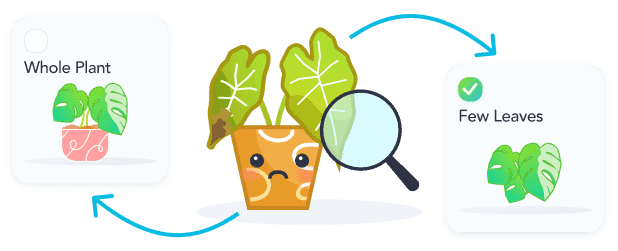Every 7d
Recommended Frequency
1 /2 cup of water
Recommended Amount
The Anthurium Papillilaminum thrives when watered regularly to maintain the necessary moisture in the potting soil. Saturate the soil about once a week with water until excess water drains from the drainage holes of your...
Every 90d
Recommended Frequency
Fertilize your Anthurium Papillilaminum every three months using a liquid fertilizer high in phosphorus, diluted by three-quarters strength.
Indirect Sun
Recommended
Indirect Sun or Filtered Sun is when sun exposure is being filtered through a sheer curtain or is not able to have the sun's rays directly hit the leaves/flowers of your plant.
Every 730d
Recommended Frequency
Repot your Anthurium Papillilaminum every two years, or once it outgrows its pot.
Peat Soil
Recommended Soil
Peat Soil is an acidic soil that retains a lot of moisture and slows decomposition. Due to such a high moisture retention this mix may require irrigation to help with draining. This soil type is best used when paired wit...

Shop Anthurium Papillilaminum
Questions about Anthurium Papillilaminum
Anthurium papillilaminum is a rare, exotic plant known for its large, velvety leaves with a distinctive texture. Native to the tropical rainforests of Colombia, it thrives in humid, indirect light conditions, making it a...

Toxicity of Anthurium Papillilaminum

Common Pests and Diseases

Related Plants
Other Articles:
Top 10 Most Popular Roses
Mar 22, 2022
How to Care for China Roses
Mar 11, 2022
How to Care for Chinese Money Plants
May 15, 2020
How to Grow and Care for A Bird of Paradise
Apr 26, 2020
Top 10 Plants To Grow In A Terrarium
May 31, 2022
How to Grow and Care for Lucky Bamboo
Mar 29, 2022
How to Grow and Care for Corn Plants
Mar 29, 2022
How to Care for Madagascar Dragon Trees
Mar 21, 2022



